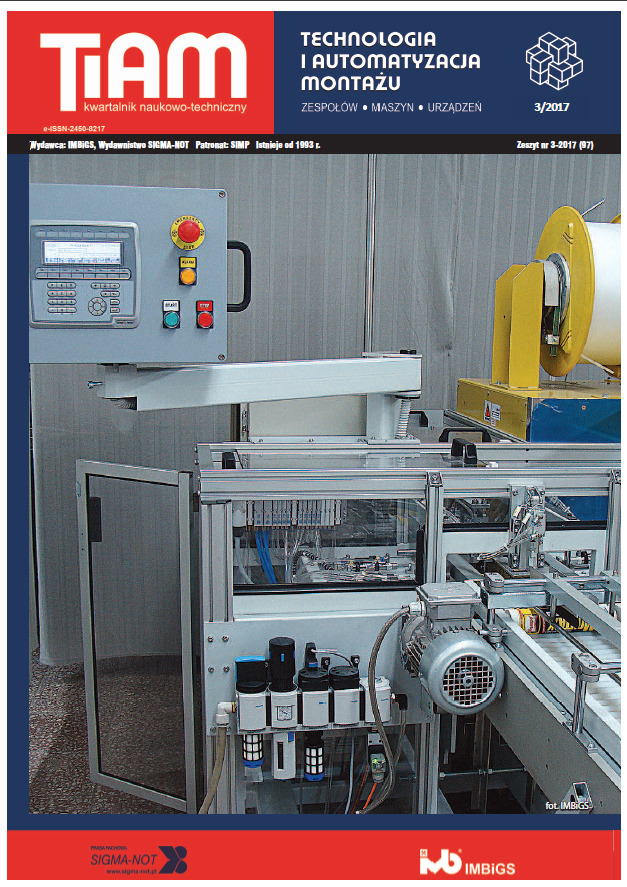Abstract
Article presents research aimed to determine changes in stiffness of epoxy adhesive depending on adhesive layer thickness. In metal-metal adhesive joints, in boundary zone of bonded elements occurs thin layer of adhesive with different properties compared to the core of the joint. In joints of small thickness contribution of properties of boundary zone in generalized value of Young’s Modulus might be highly essential. With the increase of joint thickness inß uence of apparent Young’s modulus, formed in the result of speciÞ c structure ordering caused by Þ eld force of metal boundary zone, should decline in favor for basic value of Young modulus, characteristic for the adhesive material. Results of tensile strength tests were shown, indicating decrease of tensile strength in reference to increase of joint thickness. Decrease of adhesive joint tensile strength is associated with reduction of Young’s modulus value in joints of higher thickness. Change is related with occurrence of structural defects, such as gas bubbles, looseness, which might intensify inß uence on tensile strength with the increase of thickness of adhesive joint.
This is an Open Access article distributed under the terms of the Creative Commons Attribution License CC BY 4.0 (https://creativecommons.org/licenses/by/4.0/)
References
Adams R.D. 1984. “Structural Adhesive Joints In Engineering”. Elsevier Applied Science Publishers. London and New York.
Afendi M., T. Teramoto, H. Bin Bakri. 2011. “Strength prediction of epoxy adhesively bonded scarf joints of dissimilar adherends”. International Journal of Adhesion & Adhesives (31): 402–411.
Anasiewicz K., J. Kuczmaszewski. 2016. „Pozorny moduł Younga klejów epoksydowych w połączeniu klejowym metali”. Przegląd Spawalnictwa (9): 131–134.
Ebnesajjad S. 2008. “Adhesives Technology Handbook”. Wyd. II. Norwich, William Andrew.
Kuczmaszewski J. 1995. „Podstawy konstrukcyjne i technologiczne oceny wytrzymałości adhezyjnych połączeń metali”. Wydawnictwa Uczelniane Politechniki Lubelskiej.
PN-EN 15870:2009 Kleje – Oznaczanie wytrzymałości na rozciąganie połączeń czołowych.

